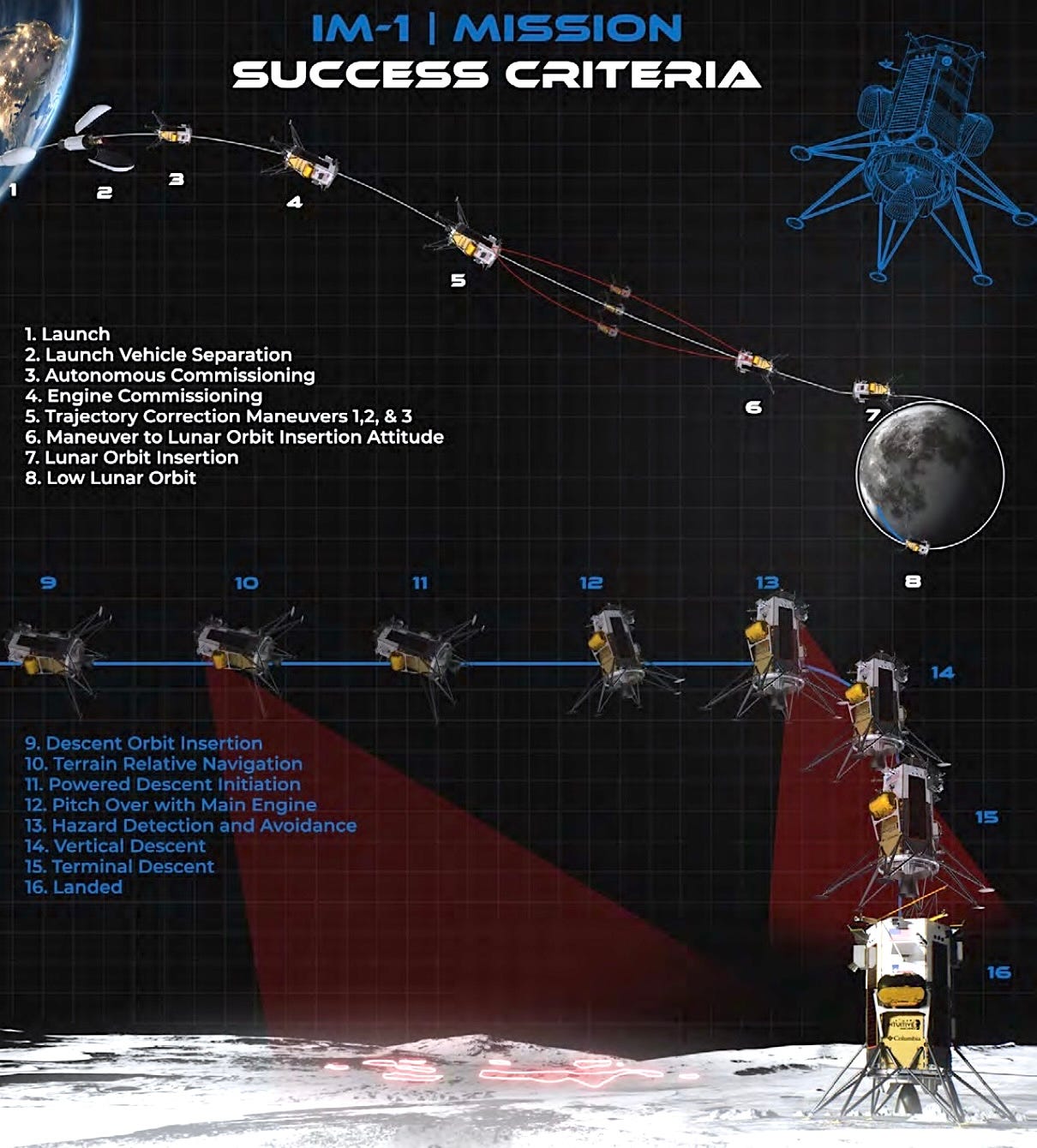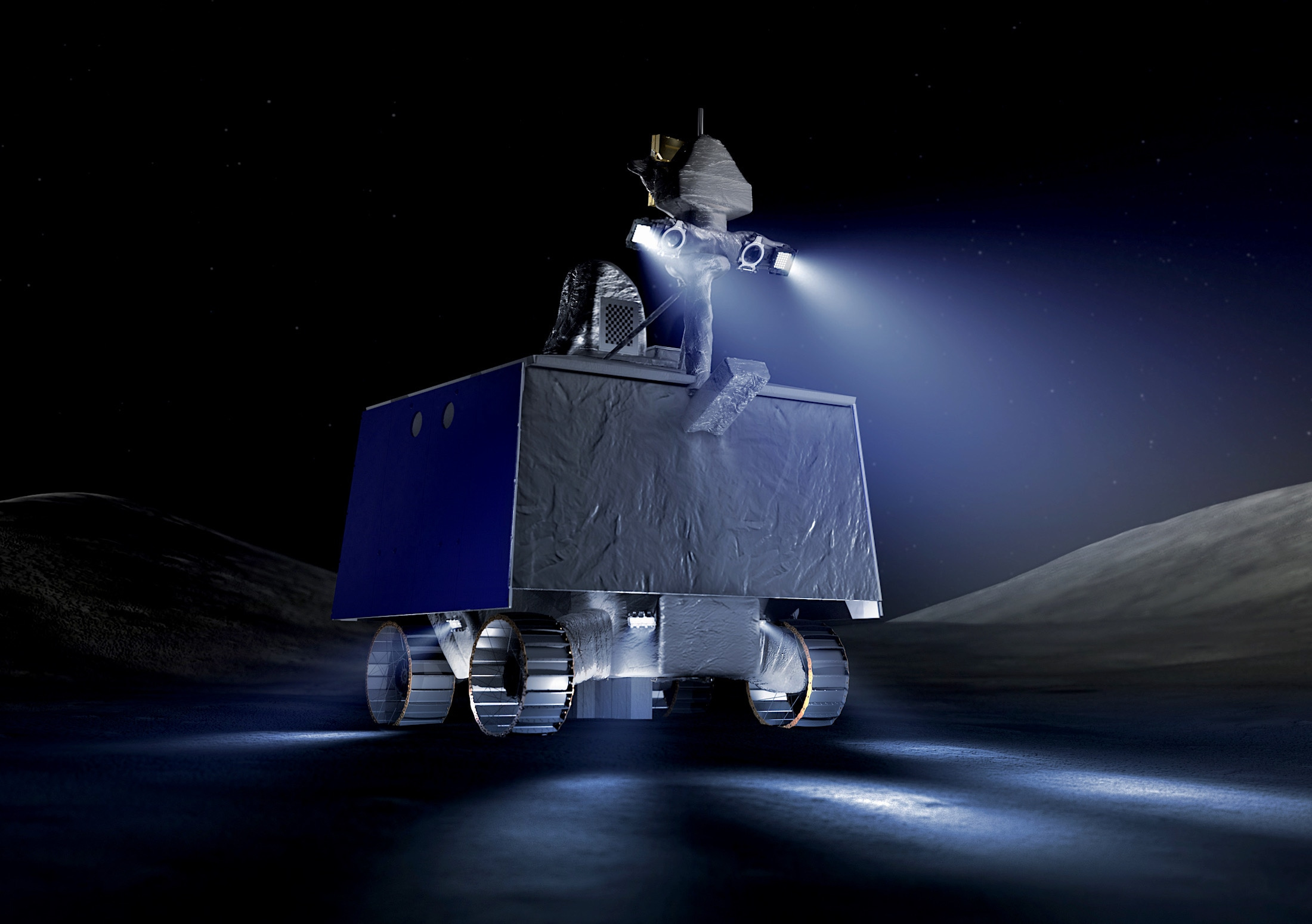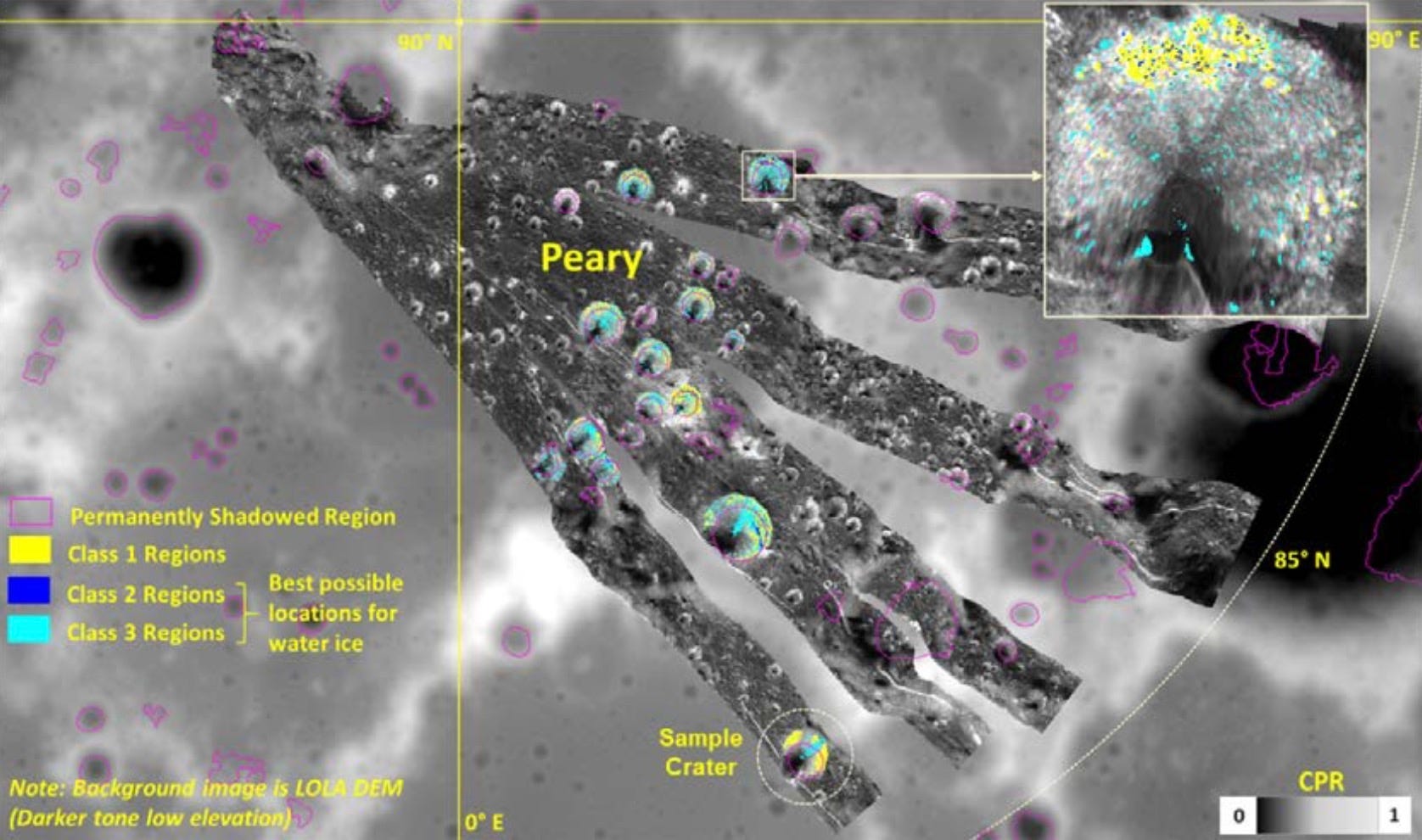Moon Monday #164: The crux of Odysseus and reaching out for resources
As the publicly traded company Intuitive Machines’ Odysseus spacecraft approaches the Moon for a soft landing attempt, it’s a good time to remind you—my dear readers—that as stated in my public Editorial Independence Policy, I do not own shares of any space company, primarily to keep my writings unbiased. It doesn’t matter if the company is public like Intuitive or has private stock like most others in the industry. I own none of it. As such, any enthusiasm expressed—or its lack or neutrality—in the coverage of space missions is intended to be genuine. Moon Monday is supported purely through organization sponsorships and reader donations, which I hope you consider and whose mechanisms are also clearly stated in the aforementioned policy.
Another reason to share this is I wish for more publishers, writers, and creators to reveal beforehand if they have any such vested interests. As a reader and friend aptly reminded me recently, none of us can be unbiased but we can always be transparent about our associations and thought processes. Having stated my position, I can now continue my blunt coverage. :)
There’s a lot riding on Odysseus for Intuitive Machines and NASA

On February 15, a SpaceX Falcon 9 rocket successfully launched and deployed Intuitive Machines’ first lunar lander called Odysseus. The lander then established communications to Earth via its commercially availed ground stations, and the company later successfully fired Odysseus’ methalox-powered main engine, including testing its throttling—which needs to work later during landing to dynamically course correct the lander’s trajectory as needed. Next up, the 4-meter tall, six-legged Odysseus will fire its engine on February 21 to attempt getting into a 100-kilometer circular lunar orbit. After operational checkouts, Odysseus will attempt an autonomous landing on February 22 at the near-polar Malapert A crater at 80°S.
The mission, named IM-1, carries six NASA science & technology payloads as part of the agency’s CLPS program and several commercial payloads too. The Space Investor noted how Intuitive Machines’ stock surged after IM-1’s successful launch and commissioning. While the lander has been performing well so far, until Odysseus begins and completes its one-shot landing attempt, its engineers won’t know if their design and testing was appropriate. The lunar descent is the true litmus test of a lander, one where the recent past doesn’t paint a pretty picture:
- The previous three non-governmental Moon landings have failed; namely Israel-based SpaceIL’s Beresheet, ispace Japan’s Hakuto-R, and US-based Astrobotic’s Peregrine.
- Even when including national successes, failed lunar landing missions in the past five years total a five out of nine.
NASA has invested in CLPS as a “shots on goal” approach to lunar surface exploration but even then back-to-back failures of Odysseus and Peregrine would greatly reduce the chances of the 10-year, $2.6 billion program getting extended or renewed in a good capacity. And if Odysseus makes it to the Moon unscathed, and I really hope it does, there’s reason to celebrate but remember that the success rate of autonomous lunar landings in the past five years would squarely be 50%.
NASA has purchased rides for its experiments on two more Moon missions by Intuitive Machines: one to the south pole and the other to the magnetic swirl of Reiner Gamma. A successful touchdown of Odysseus would certainly bode well for both NASA and Intuitive Machines. The company not only also has some commercial customers aboard these later missions but is looking for more. But a failure would be deteriorating, especially in the absence of more CLPS flights.
The point of this perspective isn’t to bring down the exploratory spirits but to state that even a successful Odysseus still means that we’ve barely begun adapting ourselves to the harsh realities of Luna. That even as lunar ambitions skyrocket worldwide, having robotic landers touchdown by themselves remain a coin flip. There is much to do still.
Chandrayaan 3’s touchdown has induced confidence that a country other than China can autonomously land things on the Moon too. JAXA’s SLIM reinforced that for the most part while opening up a new, necessary frontier of precision landing. Odysseus has the opportunity to build on them and be the one that tipped us against a world stuck in occasional Moonshots.
Many thanks to Epsilon3, Gurbir Singh and Arun Raghavan for sponsoring this week’s Moon Monday. If you love my work too, join them!
Reaching out for lunar resources

- The Honeybee-Robotics-provided TRIDENT drill is the fourth and final instrument to be tested and integrated into NASA’s upcoming VIPER CLPS rover. While VIPER was nominally being planned for a November 2024 launch to the Moon’s south pole onboard Astrobotic’s Griffin lander, Astrobotic’s failed lunar mission last month might induce delays. VIPER intends to explore areas in and around permanently shadowed regions for over four months to unravel the nature of the Moon’s water ice deposits, assess their resource potential, and help determine how accessible they are. This will help NASA plan crewed Artemis missions.
- An interesting bit in NASA’s update above on TRIDENT being integrated into VIPER is that the one-meter drill also carries a temperature sensor, which has additional value. Recall that India’s Chandrayaan 3 lander inserted a thermal probe to about nine centimeters into the surface to provide the first pristine near-subsurface lunar soil temperature measurements. Combining this data with that of TRIDENT will help scientists understand exactly how the Sun’s heat propagates downwards from the surface, determine the thermal conductivity of the near-polar and polar lunar soil, and from it infer its density and physical properties to help us know stability zones of lunar water.
- On February 14, the UK Space Agency announced £1.5 million in funding to a team led by the University of Leicester, who will develop a laser-based Raman spectroscope to fly onboard an unspecified future lander and rover by private company ispace Japan with the goal of locating water ice and other resources on the Moon’s south pole.
- UKSA will also fund Royal Holloway, University of London (RHUL) with £306,000 to develop software for ISRO’s Chandrayaan 2 orbiter to help its multi-band radar better detect underground water ice on the Moon’s south pole. UKSA, RHUL, and ISRO hope to use the same advancement for mapping Venus in high resolution using the radar on India’s upcoming Shukrayaan orbiter. Shukrayaan is not yet a commissioned mission from the Government of India, and might not launch before end of decade.

More Moon
- On February 15, Uruguay became the 36th country and the sixth Latin American nation to sign the US-led Artemis Accords for cooperative lunar exploration. The other Latin American signatories are Brazil, Colombia, Mexico, Argentina, and Ecuador. Interestingly, the latter three are members of the recently formed “Latin American and Caribbean Space Agency”, or ALCE. Inspired in part by the model of the European Space Agency, ALCE aims to pool resources of Latin American nations to better their space activities and its impact. Uruguay, however, is not an ALCE member at the moment. This might change once the country establishes its own national space agency soon.
- IAA is organizing an international symposium on March 21 and 22 dedicated to protecting the radio-quiet lunar farside for its unique importance to cosmology, chiefly in that it’s the only place in the inner Solar System that provides a view into our Universe’s ‘Dark Age’—a slice of time right before the first stars were born. The symposium is in-person but key sessions will be streamed on YouTube.
- NASA got the iconic worm logo painted on hardware elements of Artemis II, which will push four astronauts around the Moon and back no earlier than September 2025. In the meanwhile, NASA finished making the liquid oxygen and liquid hydrogen tanks of the core stage of the SLS rocket which will push astronauts to the Moon for the Artemis III crewed landing mission no earlier than late 2026.
